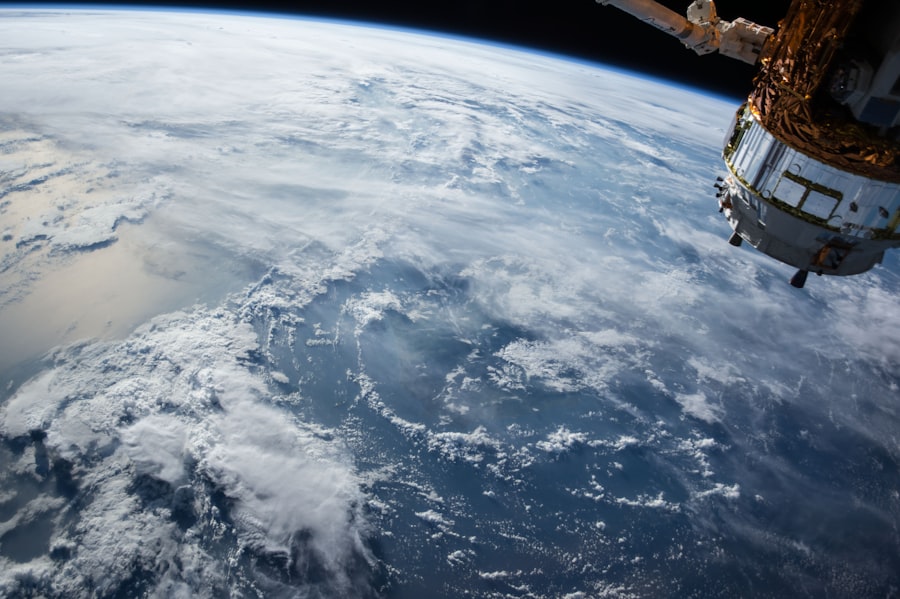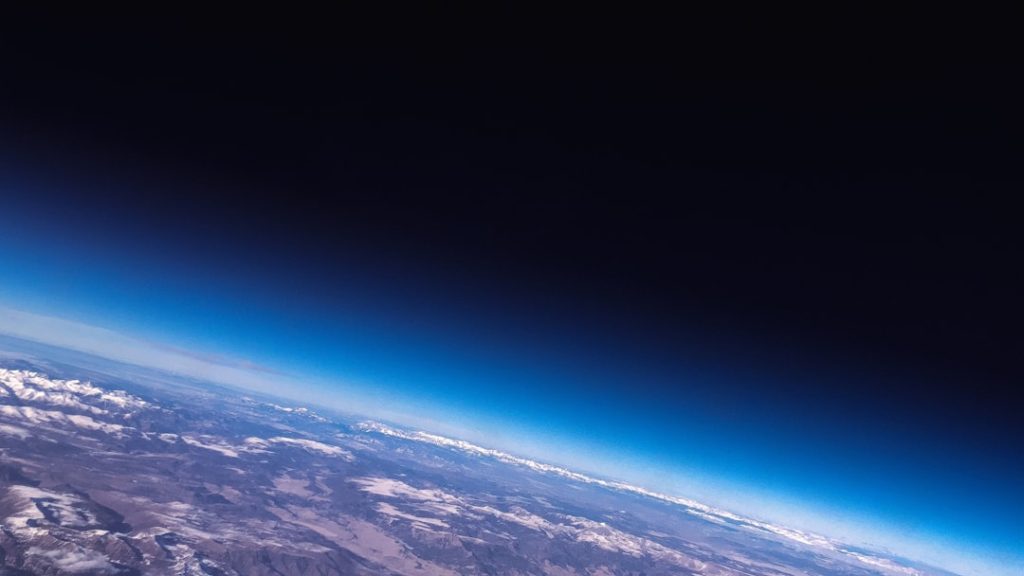The view of Earth from space is a perspective that has captivated humanity since the dawn of the space age. The first images of our planet taken from above the atmosphere revealed a stunning blue marble suspended in the vastness of the cosmos, a sight that has profoundly influenced our understanding of our home. This vantage point not only showcases the beauty of Earth but also highlights its unique characteristics, such as its atmosphere, landforms, and bodies of water.
The images captured by astronauts and satellites have become iconic, serving as a reminder of our planet’s splendor and the delicate balance that sustains life. As we venture further into the cosmos, the significance of viewing Earth from space extends beyond mere aesthetics. It provides critical insights into the planet’s systems, enabling scientists to study phenomena that are otherwise difficult to observe from the ground.
The ability to monitor weather patterns, track natural disasters, and assess environmental changes has transformed our approach to understanding Earth. This perspective fosters a sense of global unity, as it emphasizes that we share a singular home, urging us to consider our collective responsibility toward its preservation.
Key Takeaways
- Earth from space provides a unique perspective of our planet, allowing us to see its beauty and fragility from a different vantage point.
- Space exploration has greatly enhanced our understanding of Earth, providing valuable data and insights into its climate, geology, and ecosystems.
- Satellites play a crucial role in monitoring Earth’s changes, from tracking deforestation and urbanization to observing natural disasters and climate patterns.
- Earth from space photography has raised environmental awareness by showcasing the impact of human activities on the planet, such as pollution and habitat destruction.
- The imagery of Earth from space has also contributed to our understanding of climate change, highlighting the visible effects of global warming and its consequences.
- Earth from space imagery is essential in disaster management, providing real-time information and aiding in response efforts during natural disasters and humanitarian crises.
- The future of Earth from space exploration and imaging technology holds great potential for furthering our understanding of the planet and addressing environmental and climate challenges.
The Impact of Space Exploration on Our Understanding of Earth
Space exploration has revolutionized our comprehension of Earth in numerous ways. The advent of satellite technology has allowed for unprecedented data collection and analysis, leading to significant advancements in various scientific fields. For instance, remote sensing technology enables researchers to monitor land use changes, deforestation rates, and urban expansion with remarkable precision.
This data is crucial for policymakers and environmentalists who strive to implement sustainable practices and mitigate the impacts of human activity on natural ecosystems. Moreover, space exploration has facilitated a deeper understanding of Earth’s climate systems. Satellites equipped with advanced sensors can measure atmospheric temperatures, greenhouse gas concentrations, and ocean currents, providing invaluable information about climate change.
The Global Climate Observing System (GCOS) relies heavily on satellite data to track climate indicators over time, allowing scientists to model future scenarios and assess the effectiveness of mitigation strategies. This comprehensive understanding is essential for addressing the pressing challenges posed by climate change and ensuring a sustainable future for generations to come.
The Beauty and Fragility of Earth as Seen from Space

When viewed from space, Earth presents an awe-inspiring spectacle characterized by vibrant colors and intricate patterns. The deep blues of the oceans contrast sharply with the greens and browns of the landmasses, while swirling white clouds create dynamic patterns across the atmosphere. This breathtaking imagery serves as a powerful reminder of the planet’s beauty and diversity.
Photographs taken by astronauts aboard the International Space Station (ISS) often capture stunning sunrises and sunsets that illuminate the curvature of the Earth, evoking a sense of wonder and appreciation for our home. However, this beauty is juxtaposed with a stark reminder of Earth’s fragility. The thin layer of atmosphere that protects life is barely visible from space, underscoring how delicate our environment truly is.
Images depicting pollution, deforestation, and melting ice caps starkly illustrate the consequences of human activity on the planet’s health. For example, satellite imagery has documented the alarming rate at which glaciers are retreating in response to rising global temperatures. These visual representations serve as a call to action, urging individuals and governments alike to recognize the urgent need for environmental stewardship.
The Role of Satellites in Monitoring Earth’s Changes
| Metrics | 2010 | 2015 | 2020 |
|---|---|---|---|
| Number of Earth observation satellites | 870 | 1,380 | 2,200 |
| Resolution of satellite imagery (in meters) | 10 | 5 | 1 |
| Amount of data collected (in petabytes) | 1 | 3 | 10 |
| Applications of satellite data | Weather forecasting, agriculture, urban planning | Disaster management, forestry, oceanography | Climate change monitoring, land use change detection, biodiversity conservation |
Satellites play a pivotal role in monitoring Earth’s changes, providing continuous and comprehensive data that informs our understanding of various environmental processes. Equipped with sophisticated instruments, these satellites can observe everything from land cover changes to atmospheric conditions. For instance, NASA’s Landsat program has been instrumental in tracking land use changes over several decades, allowing researchers to analyze trends in urbanization, agriculture, and deforestation.
This long-term data set is invaluable for understanding how human activities impact ecosystems and for developing strategies to promote sustainable land management. In addition to terrestrial monitoring, satellites are crucial for observing oceanic changes. Instruments like the European Space Agency’s Sentinel-3 satellite measure sea surface temperatures, ocean color, and wave heights, providing insights into marine ecosystems and their responses to climate change.
These observations are essential for fisheries management and understanding phenomena such as coral bleaching. By integrating data from multiple satellites, scientists can create comprehensive models that predict how changes in one part of the Earth system may affect others, enhancing our ability to respond to environmental challenges.
How Earth from Space Photography Has Influenced Environmental Awareness
The stunning photographs of Earth taken from space have had a profound impact on environmental awareness and advocacy. Iconic images such as “Earthrise,” captured during the Apollo 8 mission in 1968, have become symbols of the environmental movement. This photograph not only showcased the beauty of our planet but also highlighted its isolation in the vastness of space, prompting a reevaluation of humanity’s relationship with nature.
Such imagery has inspired countless individuals to engage in conservation efforts and advocate for policies aimed at protecting the environment. Moreover, social media platforms have amplified the reach of these images, allowing them to resonate with a global audience. Organizations like NASA and National Geographic regularly share breathtaking photographs of Earth from space, fostering a sense of connection among people worldwide.
These visuals serve as powerful tools for education and advocacy, illustrating the impacts of climate change and habitat destruction in ways that statistics alone cannot convey. By evoking emotional responses through stunning imagery, these photographs encourage individuals to take action in their communities and support initiatives aimed at preserving our planet.
The Connection Between Earth from Space and Climate Change

The connection between Earth from space and climate change is increasingly evident as satellite technology continues to advance. Satellites provide critical data on greenhouse gas emissions, temperature fluctuations, and ice sheet dynamics—information that is essential for understanding the complex interactions within Earth’s climate system. For example, NASA’s Atmospheric Infrared Sounder (AIRS) aboard the Aqua satellite measures atmospheric temperatures and humidity levels, contributing to our understanding of weather patterns and climate variability.
Furthermore, satellites have been instrumental in monitoring changes in polar ice caps and glaciers. The GRACE (Gravity Recovery and Climate Experiment) mission has provided insights into ice mass loss in Greenland and Antarctica by measuring variations in Earth’s gravitational field caused by changes in water mass distribution. These observations are crucial for predicting sea-level rise and assessing its potential impacts on coastal communities worldwide.
By linking satellite observations with climate models, scientists can better understand how human activities are influencing global temperatures and weather patterns.
The Importance of Earth from Space Imagery in Disaster Management
Earth from space imagery plays a vital role in disaster management by providing timely information that aids in response efforts and recovery planning. Satellites equipped with high-resolution imaging capabilities can quickly assess damage caused by natural disasters such as hurricanes, wildfires, earthquakes, and floods. For instance, during Hurricane Katrina in 2005, satellite imagery was used to monitor storm surge impacts and assess damage across affected areas.
This information was crucial for coordinating emergency response efforts and allocating resources effectively. In addition to immediate response efforts, satellite data is invaluable for long-term recovery planning. By analyzing pre- and post-disaster imagery, officials can identify areas most affected by disasters and prioritize rebuilding efforts accordingly.
Furthermore, satellites can monitor environmental changes that may exacerbate future disasters, such as deforestation or coastal erosion. This proactive approach enables communities to implement mitigation strategies that enhance resilience against future events.
The Future of Earth from Space Exploration and Imaging Technology
The future of Earth from space exploration and imaging technology holds immense potential for advancing our understanding of our planet and addressing pressing global challenges. As technology continues to evolve, we can expect more sophisticated satellites equipped with advanced sensors capable of capturing high-resolution imagery across various wavelengths. These advancements will enhance our ability to monitor environmental changes with greater accuracy and detail.
Moreover, emerging technologies such as artificial intelligence (AI) and machine learning are poised to revolutionize data analysis in Earth observation. By automating the processing of vast amounts of satellite data, these technologies can identify patterns and trends more efficiently than traditional methods. This capability will enable scientists to make more informed predictions about climate change impacts and develop targeted strategies for mitigation.
Additionally, international collaboration in space exploration is likely to expand as nations recognize the shared responsibility for monitoring Earth’s health. Initiatives like the Copernicus program by the European Union exemplify this collaborative approach by providing open access to satellite data for researchers worldwide. Such partnerships will foster innovation and enhance our collective ability to address global challenges related to climate change, resource management, and disaster response.
In conclusion, viewing Earth from space offers profound insights into our planet’s beauty and fragility while enhancing our understanding of its complex systems. As technology advances and our exploration efforts continue, we will undoubtedly uncover new knowledge that will inform our stewardship of this precious home we share.


